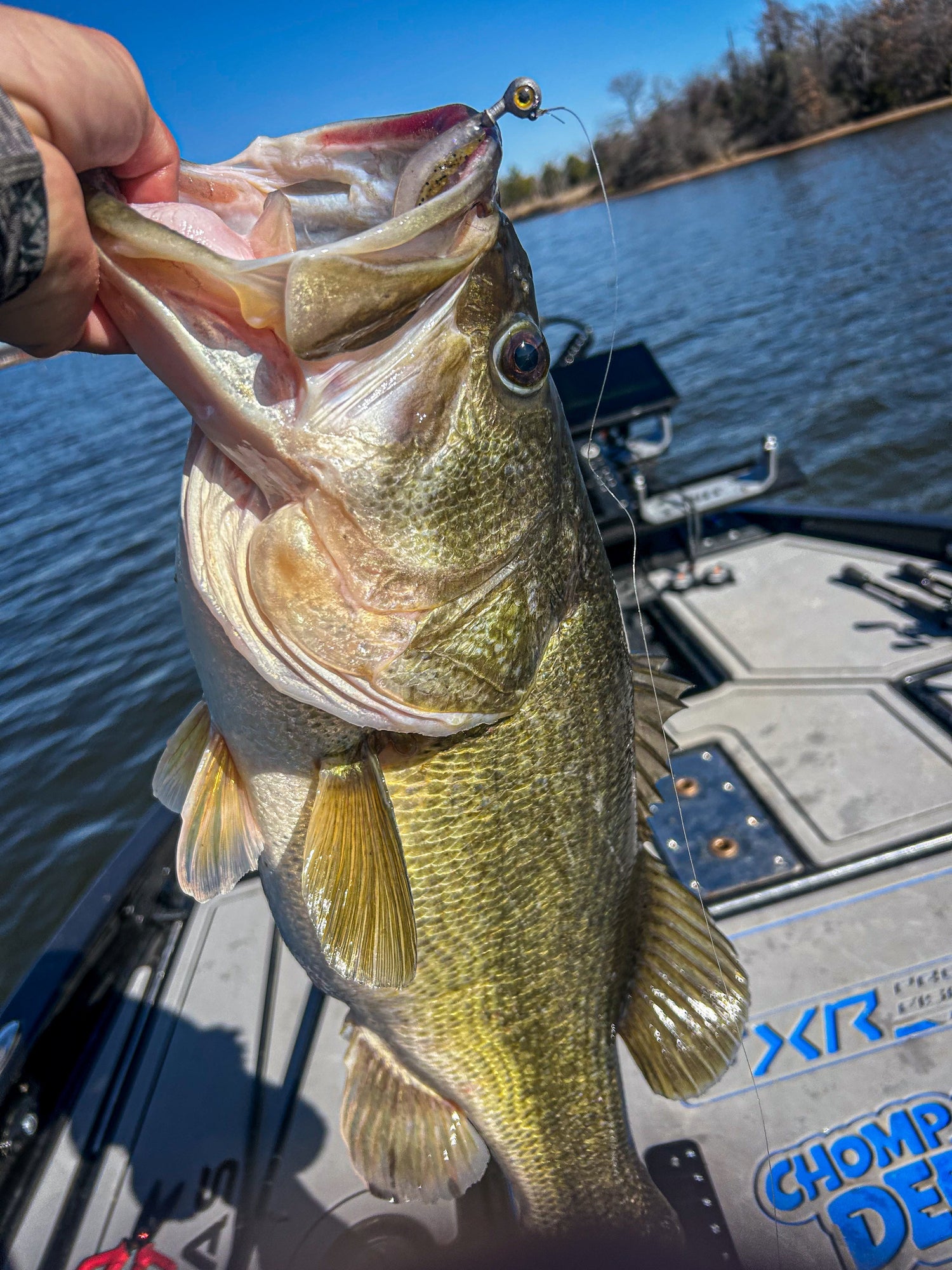Unlocking the Power of Forward-Facing Sonar: Why the Radar Love Jig is a Game Changer
Introduction:
Forward-facing sonar has changed the way we fish—period. Whether you're chasing isolated bass on offshore structure or tracking a cruising fish in open water, this technology has unlocked a new dimension of precision targeting. But to take full advantage of it, you need a bait that’s designed to move the way you see. That’s where the Radar Love Jig from Outkast Tackle comes in.
Why Forward-Facing Sonar Requires a Different Jig
Traditional jig fishing is all about feel—detecting subtle bites, reading bottom composition, and letting the fish come to you. Forward-facing sonar flips that idea on its head. You’re now visually tracking fish and making adjustments in real time. To capitalize on that, you need a jig that:
-
Falls predictably in the water column
-
Shows up clearly on sonar returns
-
Responds to subtle rod movements
-
Triggers a bite with finesse or aggression based on what you see
The Radar Love Jig was built from the hook up to do exactly that.
Meet the Radar Love Jig — Made for Sonar Fishing
What makes the Radar Love different? It wasn’t reverse-engineered to work with forward sonar—it was born for it.
-
Streamlined Head Design: Cuts through the water like a bullet, giving you a straight, fast fall that you can follow on your screen.
-
High-Density Profile: The weight-to-size ratio makes it easier to track on sonar without sacrificing the finesse presentation.
-
Premium Hook: Keeps fish buttoned up after they commit.
Pair it with your favorite small creature bait or finesse trailer, and you’ve got a sonar-ready setup that reacts exactly how you need it to.
How to Fish the Radar Love Jig with Forward-Facing Sonar
Once you find a fish on your screen, here’s a step-by-step on how to work the Radar Love:
-
Get Vertical Fast: Pitch it out just beyond the fish and let it drop straight down in view.
-
Track It Live: Because of its dense profile, the jig will show clearly as a solid return—no guessing.
-
Watch the Reaction: If the fish chases or noses up to it, give it small pops or let it pendulum away.
-
Trigger the Strike: The jig’s responsive action and clean fall mimic a fleeing baitfish—exactly what bass can’t ignore.
Pro tip: Use a forward sonar pole mount for tighter bait control, and keep your boat position steady. Forward-facing sonar is a sight game, and the Radar Love is your best cast.
Best Situations to Throw the Radar Love Jig
The Radar Love Jig isn’t a one-trick pony. It shines in multiple situations where forward-facing sonar gives you the edge:
-
Suspended Fish Over Open Water: Pitch beyond the fish and swim it through the strike zone while watching the fish react in real time.
-
Isolated Rock or Brush: See structure, spot the fish sitting on it, and make a pinpoint cast to the exact target.
-
Post-Spawn Bass: These roamers can be hard to target—but not when you can track their every move and drop the Radar Love right in their face.
-
Smallmouth Hunting: Covering flats or deep breaks? The Radar Love darts and falls perfectly to match smallmouth behavior, especially in clear water.
This jig allows you to hunt individual fish with sniper-like precision. No guesswork—just results.
Best Trailers for the Radar Love Jig
The jig is dialed, but pairing it with the right trailer gives it that next-level presentation. Here are our favorite pairings:
-
For Smallmouth: Try a subtle minnow-style bait or a small twin-tail grub. Keep the movement tight and natural.
-
For Largemouth: Go with a compact creature bait or finesse craw that adds profile without overpowering the jig.
-
For Cold Water: Go minimal on the trailer—this gives a tighter, subtler fall when bass are less aggressive.
-
For Aggression: Use a flapping-style trailer to create water displacement and pull in fish from further distances on sonar.
Choose trailers based on water clarity, aggression level on the screen, and species—and always match your trailer color to water visibility for max effectiveness.
JT Thompkins' Forward Sonar Approach with Radar Love
Outkast Pro JT Thompkins is no stranger to the sonar game. Known for his precision and calm-under-pressure style, JT has been one of the most forward-facing-savvy anglers in the tournament scene—and he trusts the Radar Love to make it happen.
While working on three new jig designs for Outkast, JT continues to rely on the Radar Love for live sonar scenarios, especially when targeting fish that are pressured or roaming. It’s his go-to when the name of the game is "see it, cast it, catch it."
JT’s tip: “Don’t overwork it. When you see a fish follow, that pause or slight rise can be the trigger. Let the jig do the work.”
Ready to take your forward-facing sonar game to the next level?
Don’t just watch fish—catch them.
Shop the Radar Love Jig here and see why live sonar anglers nationwide are switching to the jig built for the job.
FAQ: Radar Love Jig & Forward-Facing Sonar
1. What weight should I use for forward-facing sonar?
It depends on depth and wind. Most anglers prefer 1/8 for slower fall rates and better visibility on screen. Heavier weights like 1/4 oz are ideal for deeper water or chasing fish quickly.
2. Will the Radar Love Jig show up well on LiveScope, ActiveTarget, or MEGA Live?
Yes. The jig’s dense, compact profile and streamlined shape make it easy to track on all major forward-facing sonar platforms.
3. What colors work best with the Radar Love Jig?
Go natural in clear water—think green pumpkin, shad, or brown. In stained water, switch to black & blue, chartreuse, or bolder contrasts. Match your trailer to maximize visibility and realism.
4. Can I use the Radar Love for smallmouth and largemouth?
Absolutely. It’s incredibly versatile. Many anglers use it for both species, with more subtle trailers for smallmouth and bulkier profiles for largemouth.
5. What rod and line setup is best for this jig?
Use a 7' to 7'3" medium - light rod with a fast tip. Pair it with 8 - 10 lb fluorocarbon or braid to fluoro leader for sensitivity and control when watching your bait on sonar.
6. Why is it called the Radar Love Jig?
It’s a nod to the classic rock track “Radar Love”—but with a forward-facing twist. Just like the song talks about locking in from a distance, the Radar Love Jig was built to lock onto fish through forward-facing sonar. It’s our play on words: a jig made for “radar” fishing, designed to close the deal once you’ve got eyes on your target. Fish can run, but they can’t hide.





Leave a comment
All comments are moderated before being published.
This site is protected by hCaptcha and the hCaptcha Privacy Policy and Terms of Service apply.